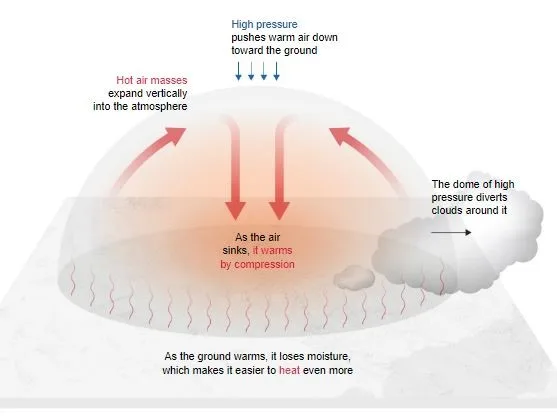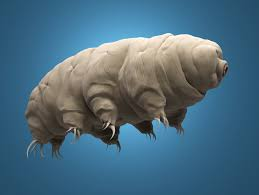Poson Poya Festival
Syllabus: GS1/Culture
Context
- Sri Lanka is celebrating the sacred Poson Poya festival, marking the historic arrival of Buddhism over 2,000 years ago.
About the festival
- Observed on the June full moon, the festival commemorates the first sermon preached by Arahat Mahinda, son of Emperor Ashoka, to King Devanampiyatissa at Mihintale.
- Thousands of devotees gather at the Mihintale Hill and other sacred sites such as Anuradhapura, which are central to the celebrations.
- One of the significant qualities that ought to be emphasized among the values celebrated on Poson Poya is non-violence. In a world where violence continues to afflict humanity on many fronts, this festival reminds us that ‘Ahimsa’ is a timeless value that safeguards both one’s own and others’ right to life and freedom.
Do you know?
- Buddhism, a major world religion, originated in India in the 6th century BCE. It was founded by Siddhartha Gautama, who is widely known as the Buddha.
Source: AIR
Heat Dome
Syllabus: GS1/ Geography, GS3/ Environment
Context
- A recent study has highlighted that nearly 76% of India’s population is at high to very high risk from extreme heat, which may be attributed to the Heat Dome Effect.
What is a Heat Dome?
- A Heat Dome is a meteorological phenomenon in which a high-pressure system traps hot air underneath it, acting like a lid or dome over a region.
- The trapped air becomes increasingly hotter, and the system can persist for days or even weeks, leading to prolonged heatwaves.

Reasons Behind the Heat Dome Formation
- Climate Change: Rising global temperatures increase the frequency and intensity of such high-pressure systems.
- Jet Stream Anomalies: A weakened or meandering jet stream can cause heat domes to remain stationary for extended periods.
- Urban Heat Island Effect: Amplifies heat in cities due to concrete structures and lack of vegetation.
Government Measures
- National Action Plan on Climate Change (NAPCC) with missions like National Mission on Sustainable Habitat and National Water Mission.
- Heat Action Plans (HAPs) adopted by cities like Ahmedabad and states like Odisha.
- IMD Heatwave Alerts and early warning systems.
Source: IE
World Accreditation Day 2025
Syllabus: GS2/ Autonomous Bodies
In News
- World Accreditation Day (WAD) 2025 was celebrated by the Quality Council of India (QCI)on June 9th, with the theme “Accreditation: Empowering Small and Medium Enterprises (SMEs)”.
- Accreditation is a formal process that verifies an institution’s adherence to quality standards in areas such as testing, inspection, or certification.
More about the News
- On this day, QCI introduced key initiatives:
- Revamped NABL Portal: This updated portal is designed to improve digital access to accreditation for Micro, Small & Medium Enterprises (MSMEs).
- Gunvatta Samarpan Initiative: This initiative promotes a public commitment to quality standards.
About Quality Council of India (QCI)
- QCI is an autonomous body established in 1997 under the Department for Promotion of Industry and Internal Trade (DPIIT), Ministry of Commerce and Industry.
- The chairperson is appointed by the Prime Minister based on recommendations from the industry.
- Its mandate is to develop and manage the National Accreditation Structure (NAS) for conformity assessment bodies across sectors like health and education, and to promote quality.
- QCI has two primary accreditation boards:
- National Accreditation Board for Certification Bodies (NABCB)
- National Accreditation Board for Testing and Calibration Laboratories (NABL).
Source: PIB
Heeng or asafoetida (Ferula assa-foetida)
Syllabus :GS3/Economy
In News
- Recently, CSIR-Institute of Himalayan Bioresource Technology (IHBT) developed a tissue culture unit to boost large-scale heeng propagation.
Heeng (asafoetida)
- Heeng plants thrive in cold, arid environments suited to the native regions in Iran, Afghanistan, and Central Asia.
- The plant prefers sandy, well-drained soil with low moisture, ideally receiving annual rainfall of 200 mm or less, though it can tolerate up to 300 mm in cultivated regions like the Indian Himalayas.
- It flourishes in temperatures of 10-20° C, tolerates highs of up to 40° C, and withstands winter lows down to –4° C.
- In extremely dry and cold weather, heeng plants typically become dormant to survive.
- Heeng is obtained from the oleo-gum resin of the plant’s taproot and rhizome, which forms 40–64% of the dried gum.
- The perennial plant takes about five years to mature and flower.
Benefits
- Heeng is a widely used spice in Indian cooking, typically added to hot oil at the start of preparation.
- Its use is deeply rooted in Indian tradition, with references in ancient texts like the Mahabharata and Ayurveda, which highlight its benefits for digestion, relieving abdominal pain, and enhancing taste.
- It is also mentioned in the Pippalada Samhita and by Panini.
Cultivation in India
- Heeng was historically imported from countries like Afghanistan and Iran despite India being its largest consumer.
- The government launched a mission in Himachal Pradesh to cultivate heeng domestically to reduce this dependency,
- The first Indian heeng seedling was planted in Lahaul Valley in 2020.
- In May 2025, the first successful flowering and seed set in Palampur marked a major milestone, proving heeng’s adaptability and paving the way for sustainable cultivation in India.
Source :TH
Extracting and Production of Nickel
Syllabus :GS3/Economy
In News
- The recent study by researchers at the Max Planck Institute for Sustainable Materials in Düsseldorf, Germany offers a promising, sustainable alternative to conventional nickel extraction methods.
Nickel
- Nickel is a chemical element with symbol Ni and atomic number 28.
- It is silvery white and hard, malleable, ductile, somewhat ferromagnetic, and a fair conductor of heat and electricity.
- It is a transition element that exhibits a mixture of ferrous and nonferrous metal properties.
- It is both siderophile (i.e., associated with iron) and chalcophile (i.e., associated with sulfur).
- It was discovered by the Swedish chemist Axel Fredrik Cronstedt in the mineral niccolite (NiAs) in 1751.
Importance
- Nickel is a hard, corrosion-resistant metal used for protective coatings, catalysts, colored glass, coins, and batteries.
- It is alloyed with metals like steel and copper to enhance strength and corrosion resistance.
- It is an important metal used in several clean energy technologies, especially Electric Vehicles (EVs), and the demand for it is expected to surpass six million tonnes a year by 2040.
- India has significant laterite nickel reserves, especially in Odisha’s Sukinda region, though these low-grade deposits are often overlooked by traditional extraction methods.
Findings of Recent study
- The new study focused on laterite ores, a type of soil-rich rocks that contain metals like nickel.
- They form in hot, tropical regions when rain and heat break down rocks over time, leaving behind metal-rich layers.
- They are abundant but tough to process.
- They form in hot, tropical regions when rain and heat break down rocks over time, leaving behind metal-rich layers.
- It introduced a single-step nickel extraction method using hydrogen plasma instead of carbon, making the process up to 18% more energy-efficient and reducing CO2 emissions by 84%.
- Traditional nickel extraction involves multiple steps and emits significant carbon dioxide by heating nickel oxide with carbon.
- extraction is currently carbon-intensive, producing over 20 tonnes of CO2 per tonne of nickel.
- It is especially important for India, which seeks to balance rapid industrial growth with climate goals and reduce reliance on imported high-grade ores by utilizing its domestic reserves.
- Traditional nickel extraction involves multiple steps and emits significant carbon dioxide by heating nickel oxide with carbon.
Source :TH
tardigrades
Syllabus: GS3/ Science and Technology
Context
- ISRO is sending tardigrades to the International Space Station (ISS) under the Voyager Tardigrades experiment as part of the Axiom-4 mission to study their survival in space.
About
- Tardigrades, also called water bears or moss piglets, are micro-animals known for their extraordinary resilience to extreme environmental conditions.
- They can withstand temperatures as low as minus 272.95 degrees Celsius or as high as 150 degrees Celsius; endure ultraviolet radiation of space and pressures of 40,000 kilopascals.
- They were first discovered in 1773 by German zoologist Johann August Ephraim Goeze.
- Characteristics: These creatures are usually between 0.3 mm to 0.5 mm long.
- They have eight legs with claws and segmented bodies protected by a cuticle.
- Tardigrades can survive extreme temperatures, and can endure high radiation, desiccation, vacuum of space, and even intense pressure.
Why are tardigrades so resilient?
- Cryptobiosis: A survival strategy in which metabolic activity is nearly halted.
- In anhydrobiosis, they lose over 95% of body water, enabling survival without moisture.
- Protective Proteins: Tardigrades produce Cytoplasmic Abundant Heat Soluble (CAHS) proteins.
- These proteins form a glass-like matrix, stabilizing cellular components during stress.

Climate-Resilient Farm Ponds
Syllabus: GS3/ Environment
Context
- In Rajasthan’s Amber block, climate-resilient farm ponds in Kukas village aim to conserve 10 crore litres of monsoon run-off, ensuring sustainable irrigation for farmers.
What Are Climate-Resilient Farm Ponds?
- Climate-resilient farm ponds are water bodies designed to collect and store rainwater, enhancing water security and promoting climate-resilient agriculture, especially in areas with limited water resources or erratic rainfall patterns.
- These are around 10-foot deep, plastic-lined water retention structures, built on 5% of individual farmers’ land, and surrounded by protective fencing.
Significance of the initiative
- This initiative aligns with several national missions and priorities:
- Jal Shakti Abhiyan and Atal Bhujal Yojana (Groundwater sustainability),
- National Mission for Sustainable Agriculture (NMSA),
- Doubling Farmers’ Income target by improving productivity and reducing risk,
- Climate-resilient infrastructure under India’s commitment to SDG-6 (Clean Water) and SDG-13 (Climate Action).
Source: TH
Project Cheetah
Syllabus :GS3/Environment
In News
- Wildlife officials and scientists from the National Tiger Conservation Authority (NTCA) published a paper defending Project Cheetah against ongoing criticism, calling some objections ideologically biased.
Project Cheetah
- Project Cheetah is a landmark wildlife conservation initiative launched on September 17, 2022 aimed at reintroducing cheetahs to India after their extinction in the late 1940s and early 1950s.
- It is the world’s first intercontinental large wild carnivore translocation project.
- It operates under the umbrella of Project Tiger and aligns with the Cheetah Action Plan to restore and conserve the species.
- Efforts are underway to expand suitable habitats, ensuring long-term survival and ecological balance in India’s grassland ecosystems.
Key Achievements
- In September 2022, eight cheetahs from Namibia were translocated to Kuno National Park, followed by twelve cheetahs from South Africa in February 2023.
- The majority of these cheetahs have adapted well to their new environment, exhibiting natural behaviours such as hunting, territory establishment, and mating.
- Notably, a female cheetah gave birth to cubs on Indian soil after 75 years, with one surviving cub reported to be six months old and showing normal growth patterns as of September 2023.
- On 3rd January, 2024 three cubs were born to Namibian Cheetah Aasha at the Kuno National Park.
- The project has actively involved local communities, providing direct and indirect employment opportunities.
- Over 350 ‘Cheetah Mitras’ (Cheetah Friends) from surrounding villages have been engaged to educate the public on cheetah behaviour and human-wildlife conflict mitigation, fostering peaceful coexistence.
Source :IE
Previous article
Govt Notifies SEZ reforms to Boost Semiconductor, Electronics Component Manufacturing
Next article
UNFPA State of World Population 2025